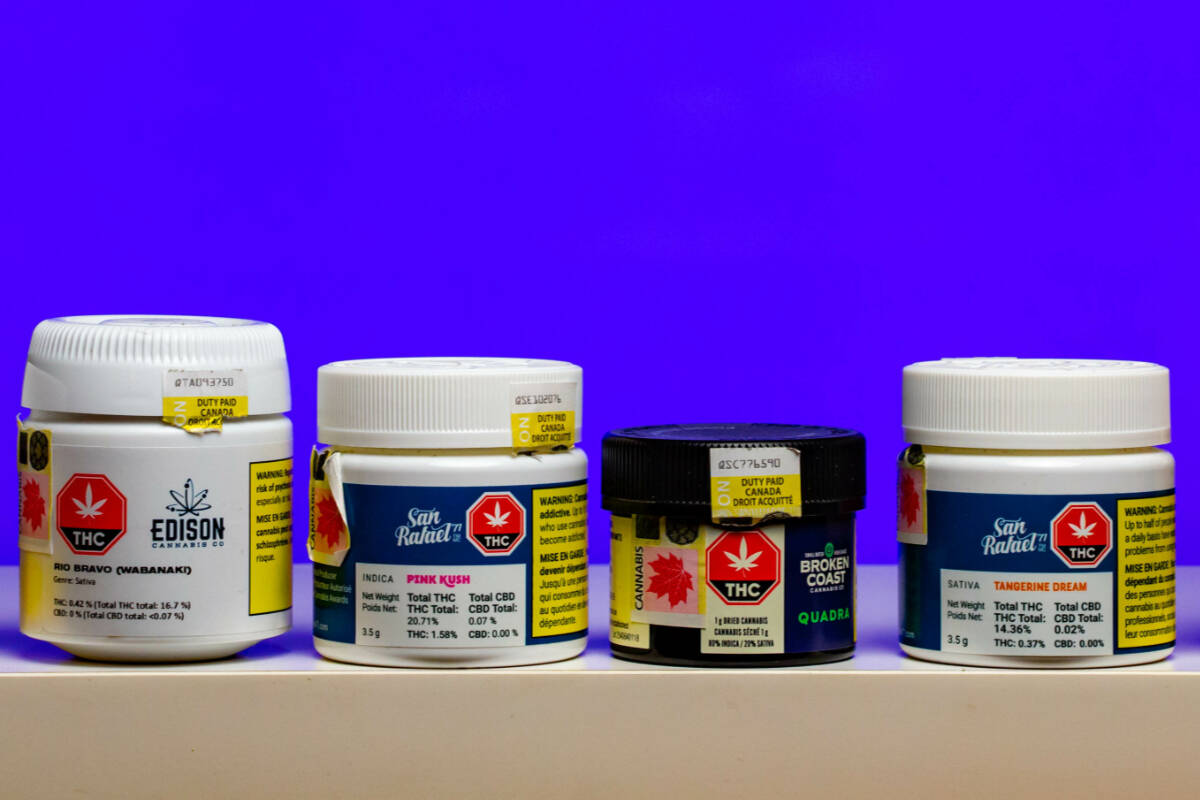By Tara Deschamps, THE CANADIAN PRESS
Canada’s cannabis industry is hoping a newly launched review of the legislation that paved the way for the recreational use and sale of pot will help the sector stave off more financial difficulties.
The statutory review launched last week by Health Minister Jean-Yves Duclos and Minister of Mental Health and Addictions Carolyn Bennett will analyze the Cannabis Act, which set purchase and possession limits at 30 grams of dried pot or the equivalent, restricted youth access to marijuana and established safety requirements for growing, selling and transporting the substance.
The federal government is required by law to conduct a review three years after the legislation came into force on Oct. 17, 2018 that studies the impact of cannabis on public health, young people and Indigenous communities.
Conducted by Morris Rosenberg, a former deputy minister of justice and deputy attorney general of Canada, and a panel of four experts who have yet to be named, the review’s scope will be broadened beyond what the law requires to include a look at the economic, social and environmental impacts of cannabis.
It could also trigger changes to potency and packaging restrictions and excise tax regulations the sector has long griped about, Duclos said.
The industry is frustrated the review’s launch arrived a year later than mandated, but is still hoping it can result in enough tweaked restrictions to make cannabis distribution easier, draw in new customers and prevent more staffing and facility cuts.
“The industry is really suffering … Some of the restrictions and lack of clarity in the regulations is really making it difficult for a lot of players in the industry,” said Sherry Boodram, chief executive and co-founder of consultancy business CannDelta Inc.
“If there aren’t major changes, there’s going to be detriment to the industry, for sure.”
The review comes as the industry is grappling with uneven distribution of cannabis stores, making it harder for pot shop owners to earn a profit. Some regions have one store on every block while others have none because their municipalities opted out of allowing pot shops.
At the same time, marijuana producers have been laying off staff, cutting facilities and trying to align their production with demand that is still being curtailed by a mighty illicit industry that has no potency limits and few marketing restrictions.
Boodram hopes the review will quell some of the headwinds, if it results in changes that allow companies to be more creative with their pot packaging and take part in events, thus reducing stigma around cannabis, building distinct brand identities and attracting new customers.
Currently there are bans on packaging that could appeal to youths, depicts people, characters and animals or evokes “glamour, recreation, excitement (and) vitality.” Restrictions on displaying, selling and promoting cannabis at events exist, too.
Elisa Keay, owner of K’s Pot Shop in Toronto, witnesses the problems packaging regulations cause all the time, when customers come in trying to remember a product they bought and loved but can only recall it came in a black jar.
Because companies are limited in how they can package items, many firms sell pot in black jars, “so then you sit and play 20 questions” with the customer to determine what they are looking for, she said.
Though she can often eventually figure out what the person was looking for, brand loyalty shouldn’t be so challenging and companies shouldn’t be “handcuffed by some regulations that are a little too rigid.”
Rick Savone, Aurora Cannabis Inc.’s senior vice-president of global government relations, agrees.
“Not only are companies forced to deal with competition rules that make all of our packages look alike, we’re dealing with … illegal producers of cannabis that can use any kind of packaging, they want any kind of ingredients that they want,” he said.
Illegal sellers can also make any health claims they want while licensed producers and stores are “gagged.”
“So the competition is far worse,” he said. “It just makes it impossible for us to be able to speak to clients to say, ‘This is how you may want to use it, and these are the potential benefits that you may want to know about.”’
High Tide Inc., the cannabis company behind Canna Cabana stores, hopes the review will tackle the current 10 milligram limit on edible pot products.
The cap “only serves to drive consumers to purchase illicit market products that are unregulated and don’t come in tamper-proof packaging,” said spokesperson Omar Khan.
There is also room for improvement in how fast products move from farms and manufacturing facilities to store shelves, Boodram said.
She wants Health Canada to drop the time it takes to review new cannabis products or changes in potency and ingredients from 60 days to a much lower time frame like 15 or 30 days, especially when minor alterations are being analyzed.
The current timeline, she said, holds up cannabis production and prevents companies from catering to consumer demand.
“Companies will lose deals because of that, because things are not moving fast enough for the partners,” she said.
Even if the government heeds advice from Boodram and the others, it could be years before they see changes.
The Cannabis Act dictates the ministry reviewing the law must issue a report, including findings and recommendations, no later than 18 months after the review begins.
Khan said, “We would urge the government to expedite the timeline for this review as many smaller players within the industry simply cannot wait 18 months for relief.”
Find the latest must-read stories from the cannabis world at canadianevergreen.com, your go-to source for news, trends, products and lifestyle inspiration from the cannabis community and beyond. You can also follow us on Facebook and Instagram and Twitter.

